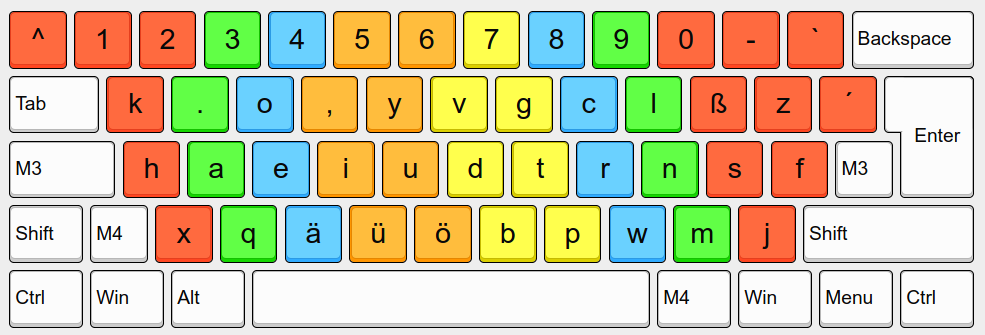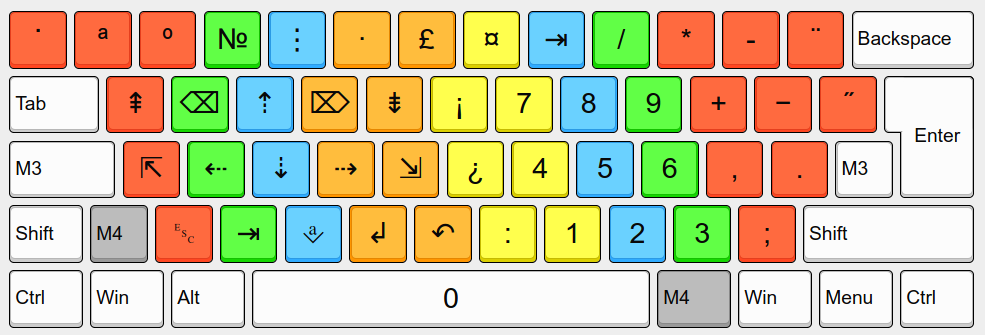
Strongly inspired by https://www.maximilian-schillinger.de/keyboard-layoutshifts-neo-adnw-koy.html
! This is about a German Keyboard Layout, it might not be suited to you !
In my life I have been somewhat resistant in learning the classic staggered QWERT labeled keyboard blind. My parents and teachers tried to teach it to me in early school time and I tried it out of own motivation in late school time. But it just didn’t stick. I would just return to the two finger picking, looking at the labeled keys.

Layer 1 - no modifiers (Layer 2 is the same but with Shift as you know it)

Layer 3 - Modifier 3 - CAPS and # on normal keyboards, left thumb on my ortho variant

Layer 4 - Modifier 4 - <> and Alt Gr on normal keyboards, right thumb on my ortho variant
Later, in my university time, I had to make much more use to the special characters when programming, so I bought an American ANSI QWERTY labeled keyboard. I thought it would help me to program faster and easier, but I also lost the German characters ß, ä, ü, ö with it (though they can be regained with shortcuts on an appropriate keyboard layout as I learned later). But this wasn’t a real change at all.
Through the presence of now two different labeled keyboard types I had to switch the settings in my computers often and I always found the process pretty annoying on both Windows and Linux, as there even is a distinction between login layout and actual layout which are configured differently.
So when I had a discussion about keyboard layout usage with my fellow students in a ShitPost group (Corona time), I complained about it. There I learned that there is just a simple shortcut for that (Windows + Space). Also, some people told that they were using an American keyboard layout on a German labeled keyboard.
I never thought of that. Such an action was just illegal to my German mind. But I accepted that you can do that.
To learn blind typing, you have to remove the labels on the keys. Of course you need to know where your keys are. You can do that by opening an overview (get it by searching in your browser or from your system settings in gnome).